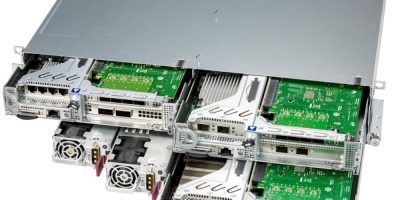Supermicro bases its intelligent edge computing on Intel Xeon D processors
Enterprise computing, storage, networking, and green computing technology specialist, Supermicro announced a range of systems for edge computing at Embedded World 2022.
Locating powerful artificial intelligence (AI) systems closer to where data is generated reduces network traffic and lowers response time. The range of Intel Xeon D processor-based systems have up to 20 cores, integral 25GbE networking and an operating temperature range from -40 to +85 degrees C. They are optimised for the intelligent edge, where responsive systems that reduce latency are required, explained Supermicro.
Charles Liang, president, and CEO of Supermicro, said: “Our latest systems are designed for harsh conditions with the highest performing CPUs and GPUs that are available”. The company is also committed to lessening servers’ carbon footprint.
The company has updated versions of its IP65 Outdoor Edge system and the Supermicro Hyper-E product lines, all of which are designed with the optimal Intel Xeon CPU and available in various forms factors.
Edge systems from Supermicro incorporate the latest Intel Xeon CPUs, including the Intel Xeon D family and the third Gen Intel Xeon Scalable processors, resulting in a performance increase over previous generations of systems, producing more work per watt of electricity.
“As data continues to be processed outside the traditional data centre, customers are looking for solutions to address the most demanding use cases to create a better overall experience for key network and edge usages and workloads,” stated Jeni Panhorst, vice president and general manager of the network and edge compute division at Intel.
The short depth and front I/O systems are critical for edge environments where physical space may be at a premium. These systems may need to operate in facilities far away from climate-controlled data centres and without interruption. The portfolio includes servers that can be installed in outdoor environments, including the pole-mounted IP65 server platform for 5G and the intelligent edge. Moving AI inferencing to the edge of the network allows faster decisions to be made without using valuable network bandwidth to communicate back to a remote data centre.




